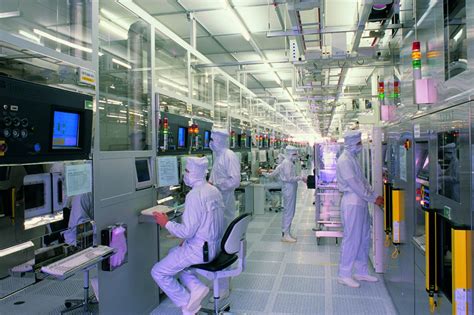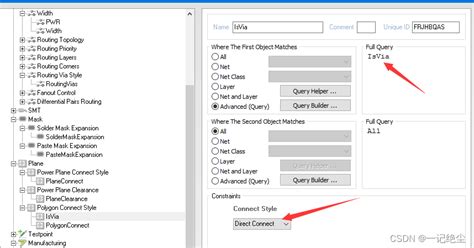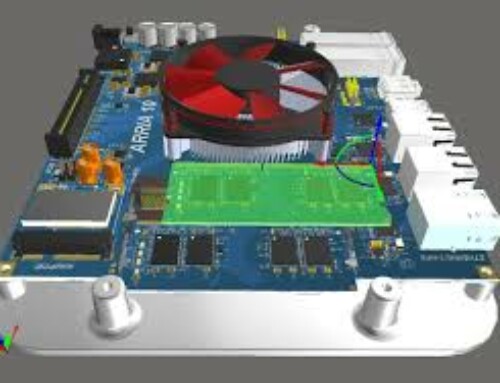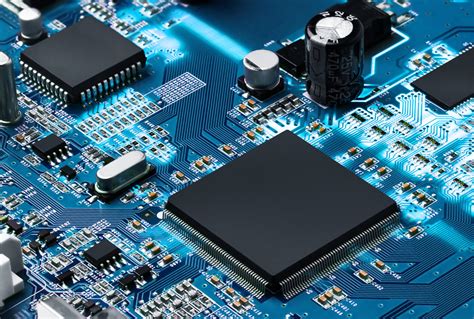Mastering Advanced Circuits Assembly: A Guide to Innovation
Key Takeaways
In the realm of advanced circuits assembly, mastering the intricacies of PCB assembly is essential for innovation. This process involves not only precise techniques but also a thorough understanding of the components that comprise a high-performance circuit. Utilizing the right tools facilitates effective PCBA practices, which are crucial for achieving optimal results. Emphasizing best practices in advanced assembly methods can significantly enhance efficiency and reliability within circuit designs. Moreover, troubleshooting common issues during assembly is vital for maintaining workflow and product quality. As industries evolve, keeping abreast of future trends in circuit assembly technology can lead to better integration of newer technologies, thus ensuring that designs are not only functional but also at the forefront of innovation. By leveraging key insights from successful case studies in advanced circuits, engineers can refine their techniques and contribute to an era where technological boundaries are continually pushed forward.
Introduction to Advanced Circuits Assembly
In today’s rapidly evolving technological landscape, advanced circuits assembly has emerged as a critical field in the development of sophisticated electronic devices. This process not only involves the physical placement and soldering of components but also encompasses intricate methodologies that improve performance and efficiency in design. By utilizing pcb assembly techniques, engineers can create compact, reliable, and high-performance circuit boards, or pcba (printed circuit board assembly), that meet the ever-increasing demands of modern applications. The significance of mastering these processes goes beyond mere assembly; it is about integrating cutting-edge tools and innovative practices that optimize circuit performance. As we delve deeper into this discipline, it becomes essential to understand how critical factors such as component selection, soldering techniques, and quality control contribute to successful circuit assembly. This introduction sets the stage for exploring the essential tools and techniques that will empower professionals to push the boundaries of what’s possible in electronic design and manufacturing.
Essential Tools for Innovative Circuit Design
In the realm of advanced circuits assembly, successful circuit design is heavily reliant on integrating the right tools and technologies. One of the foundational elements is PCB assembly (often abbreviated as PCBA), which serves as the backbone of modern electronic projects. Utilizing high-quality PCB assembly techniques ensures not only precision but also enhances the overall functionality of circuit designs. Tools such as precision soldering stations, advanced multimeters, and rework stations are crucial for ensuring that each component is securely and accurately placed on the board. The rise of automated machines for PCBA has significantly improved efficiency by allowing designers to streamline their processes, thus enabling quicker turnaround times without compromising quality.
Moreover, software tools for circuit design play an instrumental role in this landscape. Solutions like CAD (Computer-Aided Design) software provide designers with the ability to create complex schematics and layouts with ease. By leveraging these tools, engineers can simulate circuit behavior before physical assembly, reducing the chances of error during the construction phase.
Additionally, keeping abreast with industry advancements—such as newer materials that enhance electrical characteristics or improve thermal management—is integral to mastering innovative circuit design. The combination of these essential tools not only facilitates a more efficient PCB assembly process but also empowers engineers and designers to explore creative solutions that meet evolving technological demands. By embracing these advancements, one can push the boundaries of what’s possible in electronic design, driving innovation forward in this dynamic field.

Techniques for Enhancing Circuit Performance
Enhancing the performance of pcb assembly requires a deep understanding of both the design and assembly processes. By employing advanced techniques, engineers can significantly boost the efficiency and reliability of their printed circuit boards. Firstly, optimizing pcba layouts is crucial; this involves minimizing trace lengths and strategically placing components to reduce signal interference. Additionally, utilizing high-quality materials ensures better conductivity and thermal management, contributing to overall circuit performance.
Another key technique is the implementation of effective soldering methods. For instance, precision soldering techniques can help prevent cold joints that may lead to intermittent connections or failures. To further enhance thermal performance, thermal vias are critical for managing heat dissipation in complex assemblies.
Moreover, testing and validation are essential steps in the assembly process. Techniques such as automated optical inspection (AOI) can identify defects early in production, preventing costly errors down the line. Here is a brief overview of some techniques for enhancing circuit performance:
| Technique | Description |
|---|---|
| Layout Optimization | Reduces trace lengths and minimizes interference |
| Quality Materials | Ensures better conductivity and heat management |
| Precision Soldering | Prevents cold joints for reliable connections |
| Thermal Vias | Improves heat dissipation in complex circuits |
| Automated Optical Inspection | Early defect identification to ensure quality |
By integrating these advanced techniques into pcb assembly, professionals can not only enhance circuit performance but also pave the way for innovative solutions that push the boundaries of technological design. Emphasizing reliability and efficiency will ultimately result in superior performance across various applications.

Best Practices in Advanced Assembly Methods
Effective pcb assembly requires a keen understanding of best practices that enhance both the efficiency and quality of the final product. One fundamental principle is to ensure proper alignment and placement of components on the pcba. This can be achieved through rigorous pre-assembly checks, including verifying component specifications against design files. It’s crucial to maintain a clean workspace, as contamination can adversely affect solderability and signal integrity. Additionally, employing automated optical inspection (AOI) can significantly reduce errors in assembly by identifying misplaced or defective components early in the process.
Furthermore, implementing temperature control during soldering is essential for achieving optimal joint quality and longevity. Utilizing hydraulic fixtures during assembly can enhance precision and facilitate reproducibility in component placement, which is critical when dealing with high-density circuit boards. Always consider using high-quality materials for soldering to ensure robustness under various operational conditions – this not only prolongs the lifespan of the circuits but also increases reliability.
Lastly, regularly practicing these advanced assembly methods alongside thorough training for team members can lead to improved outcomes in innovation and performance. By continuously refining these practices, organizations position themselves at the forefront of advancements in circuit design technology, paving the way for future developments while ensuring quality remains at the heart of their assembly process.
Troubleshooting Common Circuit Assembly Issues
When engaging in pcb assembly, it’s common to encounter various challenges that can impede the performance of your project. One of the most prevalent issues is misalignment during the pcba process, which can lead to soldering defects. To mitigate this, it is crucial to ensure that components are properly aligned before soldering them onto the board. Utilizing high-precision tools can significantly enhance the accuracy of component placement.
Another frequent problem is poor solder joint quality, which can result from insufficient heating or improper solder material. It’s essential to select high-quality solder and keep a consistent temperature throughout the assembly process. Additionally, regular inspection of solder joints under magnification helps identify and rectify potential defects early on.
“A meticulous approach to quality control during assembly can save time and resources in the long run.”
Dust and foreign materials on the circuit board can also pose a significant risk during advanced circuits assembly. To maintain optimal conditions, consider implementing a cleanroom protocol or using specialized cleaning agents designed for electronic components.
Lastly, electrical testing at various stages will help detect issues like shorts or opens before completing the assembly. By adopting systematic troubleshooting techniques and integrating best practices into your workflow, you can enhance both reliability and performance in your circuit designs, ultimately leading to more innovative solutions in electronic applications.
Future Trends in Circuit Assembly Technology
As the landscape of pcba continues to evolve, several emerging trends are shaping the future of advanced circuits assembly. One significant advancement is the integration of automated assembly processes, which utilize robotics and artificial intelligence to enhance precision and speed in pcb assembly. These innovations not only reduce human error but also optimize production timelines, enabling engineers to pivot faster in a dynamic market. Additionally, the rise of flexible electronics is having a profound impact on design methodologies. This trend allows for the creation of lightweight and adaptable circuits that can be integrated into a myriad of applications, ranging from wearable technology to innovative medical devices.
Furthermore, sustainability is becoming an increasingly critical consideration within circuit assembly practices. Manufacturers are adopting eco-friendly materials and processes that minimize environmental impact while maintaining performance standards. This shift toward sustainability not only aligns with global regulatory trends but also meets consumer demand for greener products. Finally, the ongoing advancements in simulation software are improving the design stage of pcba, empowering engineers to visualize potential circuit performance under various scenarios more accurately, thus streamlining development cycles.
By embracing these trends, companies can significantly enhance their competitiveness and push the boundaries of technological design within the realm of advanced circuits assembly.

Case Studies: Success Stories in Advanced Circuits
The field of advanced circuits assembly has witnessed remarkable transformations through innovative practices and groundbreaking technologies, showcasing how robust pcb assembly processes can lead to exceptional outcomes. For example, a leading electronics manufacturer implemented a new approach to pcba, integrating advanced materials and robotics into their assembly lines. This shift not only reduced production time by nearly 30% but also significantly enhanced the performance of their products. Another noteworthy case involves a startup that specialized in IoT devices; they adopted modular assembly techniques that allowed for rapid prototyping. This flexibility enabled them to pivot according to market demands and effectively reduce costs while maintaining high standards. These success stories demonstrate that focusing on efficient pcb assembly methods, alongside embracing the latest technological advancements, is crucial for any organization looking to thrive in the competitive landscape of circuit design and production. As exemplified by these cases, the application of innovative techniques has proven to elevate the quality and efficiency of pcba, ultimately leading to substantial impacts on both productivity and profitability in various sectors.
Conclusion: Embracing Innovation in Circuit Design
In the realm of advanced circuits assembly, the significance of innovation cannot be overstated. As technology continues to evolve, so does the need for pcb assembly techniques that not only keep pace with advancements but also redefine performance benchmarks. Embracing modern methodologies in pcba ensures that designers can develop circuits that are not only robust but also highly efficient. Incorporating cutting-edge tools and techniques allows engineers to overcome traditional obstacles, optimizing both design processes and outcomes. As we look to the future, the integration of intelligent systems and innovative materials in circuit design will pave the way for unprecedented growth and opportunities in the industry. Ultimately, by prioritizing innovation, professionals can create high-performance circuits that meet the demands of a rapidly changing technological landscape, ensuring that they remain at the forefront of design excellence.
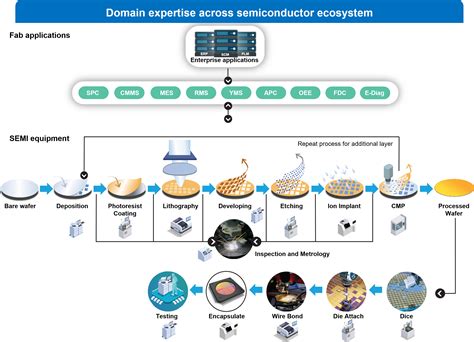
Conclusion: Embracing Innovation in Circuit Design
In the rapidly evolving landscape of pcb assembly, it is crucial to stay ahead of the curve by embracing innovation in circuit design. As technology advances, the demand for high-performance pcba processes continues to rise, necessitating a deep understanding of modern assembly techniques. By integrating state-of-the-art tools and methods, engineers can enhance the efficiency and reliability of their circuit assemblies. This journey into the realm of advanced circuits assembly not only involves adopting best practices but also requires a commitment to continuous learning and adaptation. As we look to the future, the potential for breakthroughs in circuit assembly technology is immense, paving the way for smarter, more efficient devices that can respond to the increasing complexities of our digital world. Thus, embracing innovation becomes not just an option but a necessity for anyone involved in pcb assembly and pcba, ensuring that they remain at the forefront of technological advancement.
FAQs
What is PCB assembly and why is it important?
PCB assembly, or PCBA, refers to the process of adding electronic components to a printed circuit board. This step is crucial as it determines the functionality and performance of the electronic device being developed.
What tools are essential for advanced circuit assembly?
Essential tools for advanced pcb assembly include soldering irons, pick-and-place machines, and inspection equipment. Each tool plays a significant role in ensuring pcba quality and efficiency.
How can I enhance the performance of my circuits?
To enhance circuit performance, consider using high-quality components, optimizing layouts for signal integrity, and implementing thermal management techniques. These practices help achieve greater reliability in your pcb assembly efforts.
What are some common issues faced during circuit assembly?
Common issues can include misaligned components, soldering defects, and poor connectivity. Understanding these challenges is vital for improving your pcba processes.
What future trends should I be aware of in circuit assembly technology?
Future trends in circuit assembly technology include automation advancements, increased use of artificial intelligence for process optimization, and greater emphasis on eco-friendly materials. Keeping abreast of these trends can give you a competitive edge in the realm of pcb assembly.
For more detailed information on PCB assembly solutions, please click here: Andwin PCB Assembly.

